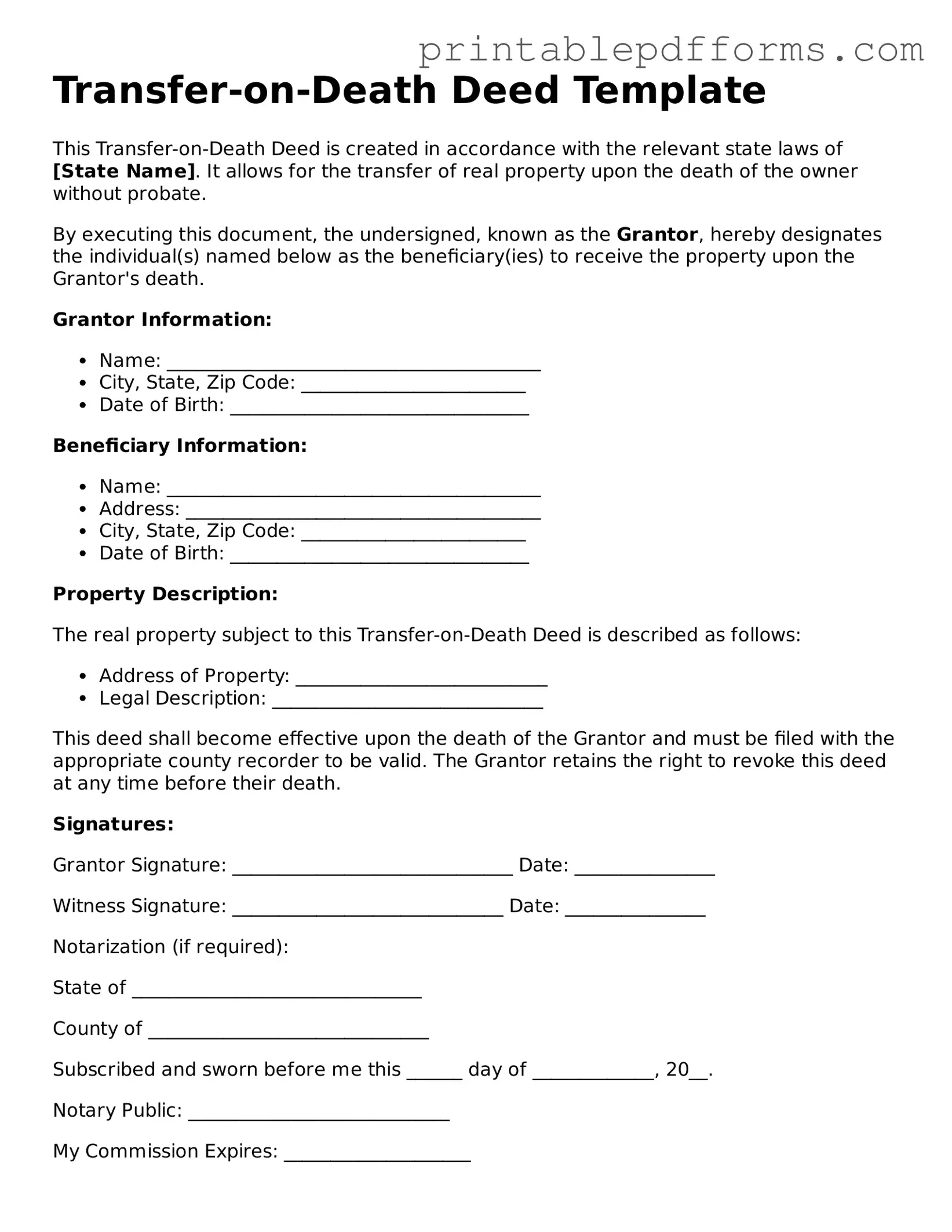Transfer-on-Death Deed Template
This Transfer-on-Death Deed is created in accordance with the relevant state laws of [State Name]. It allows for the transfer of real property upon the death of the owner without probate.
By executing this document, the undersigned, known as the Grantor, hereby designates the individual(s) named below as the beneficiary(ies) to receive the property upon the Grantor's death.
Grantor Information:
- Name: ________________________________________
- City, State, Zip Code: ________________________
- Date of Birth: ________________________________
Beneficiary Information:
- Name: ________________________________________
- Address: ______________________________________
- City, State, Zip Code: ________________________
- Date of Birth: ________________________________
Property Description:
The real property subject to this Transfer-on-Death Deed is described as follows:
- Address of Property: ___________________________
- Legal Description: _____________________________
This deed shall become effective upon the death of the Grantor and must be filed with the appropriate county recorder to be valid. The Grantor retains the right to revoke this deed at any time before their death.
Signatures:
Grantor Signature: ______________________________ Date: _______________
Witness Signature: _____________________________ Date: _______________
Notarization (if required):
State of _______________________________
County of ______________________________
Subscribed and sworn before me this ______ day of _____________, 20__.
Notary Public: ____________________________
My Commission Expires: ____________________
